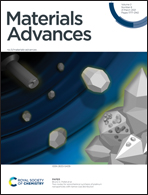Recent advances in nanocellulose processing, functionalization and applications: a review
Abstract
In recent years, environmental and ecological concerns have become a major issue owing to the expansion of petroleum-based synthetic materials and products, and therefore the development of novel and effective synthetic materials that have ecofriendly and economical properties is of significant interest. With the improvements in nanotechnology, biopolymer nanocellulose has gained further attention owing to its remarkable properties and easy availability from various plant species and agricultural waste products, such as rice husk, tea leaves, sugarcane bagasse and so forth. Nanocellulosic materials have wider applications, for example they are used in bio-sensing, catalysis, wastewater treatment, drug delivery, tissue engineering, flame retardants and so on, owing to their long-lasting nature, anisotropic shape, splendid biocompatibility, potent surface chemistry, and efficacious mechanical and optical properties. Chemical, mechanical, physicochemical and enzymatic pretreatments can be utilized to synthesize nanocellulose from cellulosic waste. The features of nanocellulosic materials are mainly dependent on the extraction technique, source and efficient subsequent surface functionalization. Surface functionalization of nanocellulosic materials involves various routes of functionalization, for example, to provide ionic charges on the surface of nano-cellulose via phosphorylation, carboxymethylation, oxidation and sulfonation on nanocellulosic surfaces, or to generate a hydrophobic surface on a nanocellulosic material via acetylation, etherification, silylation, urethanization and amidation. Functionalization of nanocellulose through grafting of a polymer onto its backbone is also an interesting route owing to its wider applications in various dimensions. These modifications provide potential nanomaterials which can be utilized as reinforcing agents in various nanocomposites and also promotes specific features for the production of novel cellulosic nanomaterials, with the objective of promoting their applications in the field of functionalized nanomaterials.



 Please wait while we load your content...
Please wait while we load your content...